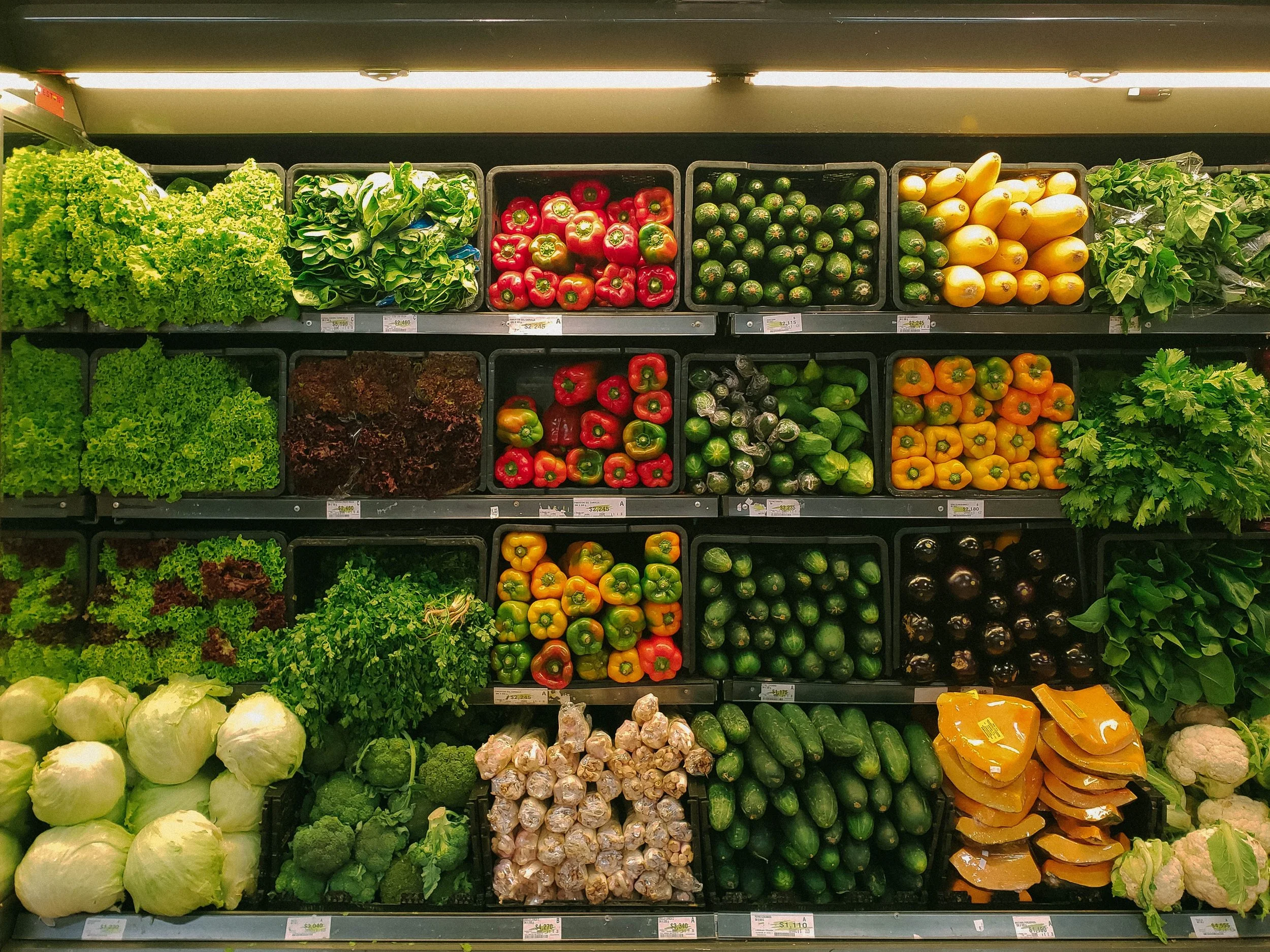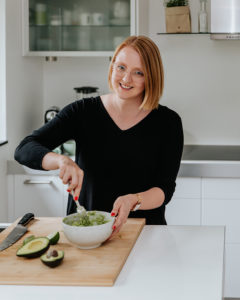
Photo by nrd on Unsplash
The amount of money that people spend on food has changed pretty dramatically over the last decades. In the US in the 1900s, families spent on average around 40% of their total budget on food. By the 1950s that had fallen to 30%, and the consumer expenditure report from 2018 reports that the average household is now spending just 10% on food. Of that, 56% is for food at home, and 44% is away from home. (1)
In 2017 in the EU it was reported that the average spend on food plus non-alcoholic beverages was 12.2% of a household’s budget (ranging from 27.8% in Romania to just 8.2% in the UK). (2)
For context, the OECD reports that between 2014 and 2018 household disposable income has increase per year on average in the EU by 1.15% and in the Unites States by 1.63%. (3)
The quality of the food we eat can have a significant impact on our health over time, so it’s possible that such a small emphasis in the budget could be problematic. Especially when taking into account potential future healthcare-related costs.
Unfortunately, it often seems to be the case that the less nutrient-dense foods tend to be cheaper than healthier alternatives, which can cause confusion in making the best choice.
If it’s not possible for you to increase your food spending, but you still want to eat as healthfully as possible, I have a few key tips for you:
Think about good/better/best when it comes to meat and dairy
Fish & Seafood
Having at least one serving of an oily fish (think salmon, sardines, anchovies, herring, or mackerel) per week tends to be one of my first nutritional recommendations due to the incredibly important and healthy Omega-3 fats that they contain. If one portion of these fresh, wild-caught fish isn’t possible on your budget, look for the same but as a tinned version. Just make sure it’s tinned in just water or olive oil (optionally some herbs or spices) but without any preservatives. All the above-mentioned fatty fish are great options as are oysters.
Red meat
The best sources of red meat would be grass-fed (or pastured if you are talking about pork), followed by grass-fed but grain-finished. If these are out of the budget, then opt for cuts of meat that are low-fat, (like lean ground meat) as the fat tissue is where animals store their nutrients but also their toxins. Think about splurging occasionally on one of the higher quality sources.
Dairy
Raw and full-fat forms are by far the best if you know and trust the source. If you can’t access raw dairy, swap out the skim or low-fat version for the full-fat to ensure you’re getting the maximum nutrient density. This is true not only for milk, but also for other dairy products as well like yogurts or cheeses. Just remember that if you’re frequently drinking glasses of milk, the swap to higher fat versions do come along with the extra calories, so you will need to adjust your diet accordingly.
Poultry
Look for pastured chicken, just like you would pork. If you can’t swing that, then just like with red meat stick to the low-fat cuts like the chicken breast. Just make sure you’re bringing fat onto your plate in other ways! It’s always cheaper to buy the whole chicken at once and then you have your protein sorted for multiple meals at once!
Eggs
Eggs are tricky ones as there are so many different classifications involved. If you can’t get yours straight from a farmer (or your own chickens!), look for certified organic. This means that they were raised free-range: they can move about freely inside the barn they are being raised in, which is “free-run”, but on top of this they also have access to outdoor runs. (However, that is only when weather permits and possibly through a small door that they may not even use!) You can also find Omega-3 and vitamin fortified eggs, but the organic, free-range are still your best option, followed by free-run.
In general, if you struggle to budget for quality meats and dairy, it can often be better to eat less of them rather than purchase the cheaper versions. These animals are usually raised in ways that are a burden to the environment and due to their non-native diet tend to have an inflammatory balance of Omega-3 to Omega-6 fats.

Photo by NeONBRAND on Unsplash
Buy frozen or canned vegetables
Don’t be afraid of buying your produce in the frozen section! Often the prices will be cheaper, and these fruits and vegetables are usually flash frozen shortly after being picked – which means they can actually be more nutritious than their “fresh” counterparts that have been sitting in transportation and in the store for days or even weeks. You can cook them up with your main meal, or even toss them frozen into a smoothie!
Canned veggies can also be a great staple to stock your pantry with and can come in handy if you’ve used up your fresh produce and want something to stretch the budget a bit longer before you go shopping. But just like with tinned seafood, make sure there aren’t a whole host of preservatives in there – look for just water and perhaps some salt. Legumes are a great one to stock here.
Buy in bulk
Keep an eye out for discounts and stock up when you can! I’ve definitely been that person who clears out the stock of almond milk when they’re on offer. But there are also more and more stores that offer bulk sections where you can purchase things like nuts, seeds, flours, grains, pasta, etc. in bulk, and often in your own containers as well. Usually these sections tend to be lower priced than the pre-packaged counterparts.
This can also translate to meat as well. Buying a whole chicken can work out cheaper by weight than individual cuts. If you can purchase a cow-share from a local farmer, you’ll also have a lower price than the same quality of meat from the shop.
Eat in season
Fresh, in-season produce is almost always going to be cheaper than when it is out of season. So think about rotating the types of fruit and vegetables you eat throughout the year depending what is in season. You might even discover some new varieties you’ve never tried before! You can head over here to download my free printable lists of what is in season when.
Meal planning & batch cooking
This is probably my favourite tip – I love meal planning and batch cooking for just making life easier in general! Planning out your food for the week in advance helps ensure that you only buy what is needed and don’t have to throw money away in spoiled food at the end of the week. It helps cut down on mid-week impulse shopping since you know exactly what you’re having and have elements ready to go at home. If you’re on a really tight budget, you can even price out your shopping list to ensure you can get everything you need.
Cooking bigger batches to have the next day as leftovers (my favourite thing to do for lunch) or to freeze for later can help your budget for that week or later down the line if you find yourself stuck for what to eat. Reheat and go!
Track your spending
If you don’t already, it can be helpful to track your spending for at least a week or two to get a baseline idea of your food purchase habits. Take into account both what you buy to eat at home, but also what you’re eating out – including coffees and other drinks! Being aware and totally honest with ourselves is the first step to getting a budget on track if you feel like you’re struggling. Then you can identify areas for improvement where you might be able to create some extra wiggle room.
I hope these ideas provide some good inspiration for you in terms of how to make your grocery budget stretch further and what to prioritize! We are what we eat, so it’s important to try and do the best we can with the resources that we have at the moment. At the same time, don’t stress about the areas where you might need make compromises; just take it one step at a time.
Sources:
(1) https://www.valuepenguin.com/how-much-we-spend-food
(2) https://ec.europa.eu/eurostat/web/products-eurostat-news/-/DDN-20181204-1
(3) OECD (2019), Household disposable income (indicator). doi: 10.1787/dd50eddd-en. https://data.oecd.org/hha/household-disposable-income.htm (Accessed on 10 May 2019).

